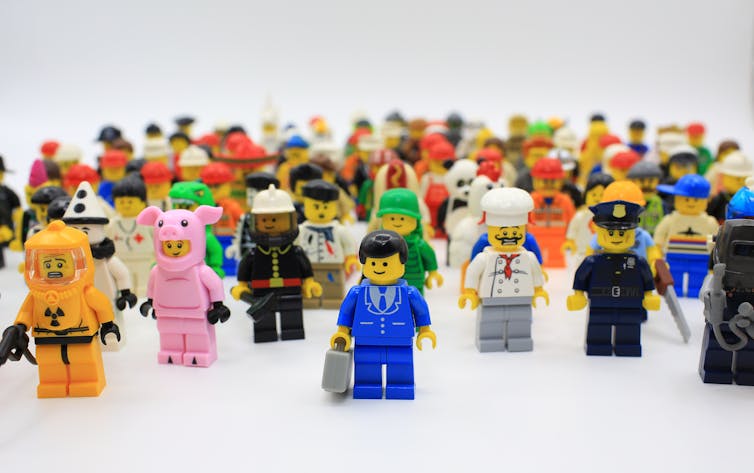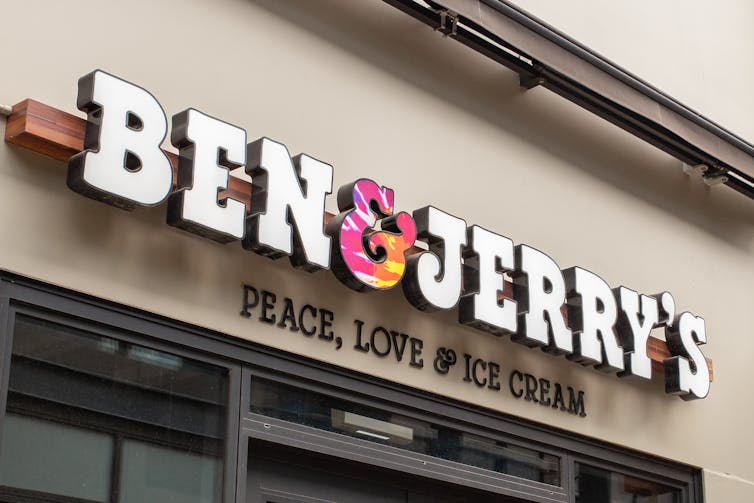Consumers are wise to ‘woke washing’ – but truly ‘transformative branding’ can still make a difference
With brands increasingly engaging in social change campaigns and leveraging their influence to be “purpose-led”, the time has come to ask a couple of big questions: is this a viable strategy, and how sceptical should we be of so-called “brand activism”?
In recent weeks alone, Ben & Jerry’s has launched a new ice-cream flavour called “Change is Brewing” to support Black-owned businesses and raise awareness of the People’s Response Act, proposed legislation to establish a new public safety agency in the US.
Lego declared it would promote inclusive play and address harmful gender stereotypes with its toys. Mars Food rebranded Uncle Ben’s rice to Ben’s Original in response to criticisms of the racial caricatures in its marketing.
At the same time, businesses have a chequered history when it comes to engaging with societal problems, from self-serving “box ticking” corporate practices under the guise of social responsibility to shifting responsibility to consumers to make ethical choices (such as reusable coffee cups).
More recently, “woke washing” has seen brands promoting social issues without taking meaningful action. Consider fast fashion brands that promote International Women’s Day while simultaneously profiting from the exploitation of female workers.

Lego has pledged to combat gender stereotyping in its toys. Shutterstock
Change from within
How then can brands legitimately shoulder responsibility to support or promote societal transformation?
Our research introduces the idea of “transformative branding”. This involves companies working with customers, communities and even competitors to co-create brands that lead on both market and social fronts.
Transformation branding can be achieved by for-profit organisations, not-for-profits and social enterprises. The common factor is balancing business and societal goals to create change from within the market system.
Marketing concepts with a social edge have proliferated in the past 50 years, but finding actual solutions has been less successful. We ask how corporations can act to genuinely contribute to society and show how transformative branding can help brands shoulder that responsibility.

The Patagonia clothing brand’s ‘worn wear’ scheme promotes recycling over new purchases. Shutterstock
Beyond making money
Transformative branding works via two main market-shaping elements: leadership and collaborative coupling. These enable companies to partner with stakeholders to change their business landscapes.
First, leadership involves building a vision for the transformation. This requires leaders to think flexibly and creatively, work to long time horizons and stay attuned to changing ideologies. This involves fundamentally re-imagining what branding can do – beyond making money.
Second, collaborative coupling involves implementing this vision across the different dimensions of the brand. Key to this is mobilising stakeholders, including customers, employees, investors, suppliers, governments, communities and competitors.
When the brand and its stakeholders collectively throw their weight behind the goal of transformation, it signals commitment, distributes expertise and resources and establishes legitimacy.
Leadership and collaborative coupling work together to change the business environment. Our research shows this has ripple effects, creating opportunities for transforming economic, regulatory, socio-cultural and political environments.

Ice-cream brand Ben & Jerry’s builds social responsibility and activism into its corporate ethos. Shutterstock
Transformative branding in practice
Patagonia founder Yvon Chouinard is a good example of transformative branding at work, particularly in his candid admission that the notion of a fully sustainable business is “impossible”. Instead, Patagonia has reframed its priorities around responsibility, with Chouinard re-imagining the brand as a solution to environmental degradation.
This vision is central to the brand’s iconic “demarketing” campaign, “Don’t buy this jacket”, which aims to shift the consumption ideology from purchase to repair.
More recently, Patagonia’s “Buy Less, Demand More” campaign and its “Worn Wear” scheme for used apparel have brought the notion of a circular economy into the company’s strategy to promote a culture of reuse rather than always buying new.
Dutch chocolate brand Tony’s Chocolonely demonstrates collaborative coupling in its campaign to clean up production and supply chain practices in the chocolate manufacturing industry, and to eliminate illegal child labour and modern slavery.
The company’s “open chain platform” helps all industry players, including competitors, to foster equitable and transparent supply chains and ensure a living income is paid to cocoa farmers. The brand actively erodes its own potential competitive advantage in the process.
Staying sceptical
But transformative branding is complex and dynamic, and authenticity is paramount. For instance, earlier this year, Tony’s was removed from watchdog organisation Slave Free Chocolate’s ethical producers list over its partnership with a major chocolate producer being sued for allegedly using slave labour.
Tony’s responded by claiming it was important to educate and inspire business partners and competitors to adopt ethical principles and practices.
This complex and often slow process of negotiating what it means to be ethical is all part of transformative branding. It adapts to the differing goals and values of many stakeholders.
And while transformative branding offers a path towards a more sustainable and equitable future, we should continue to cast a critical eye on brands claiming to be a force for good, challenge them and hold them accountable where necessary.
Source: The Conversation





